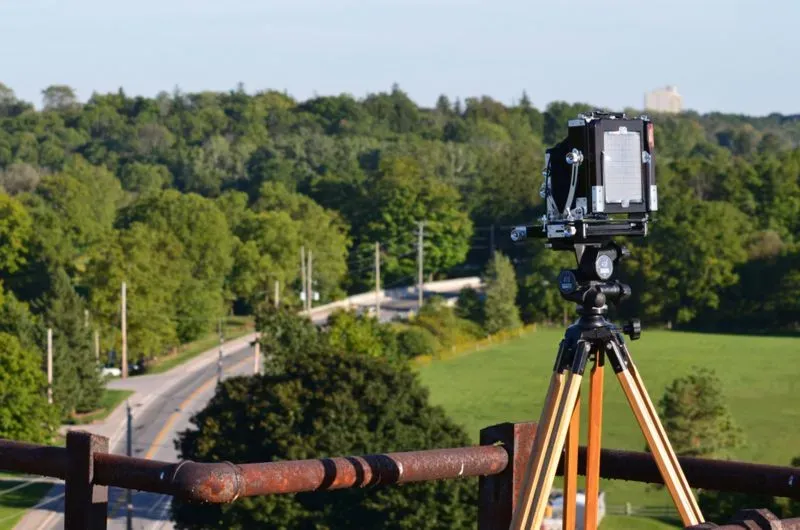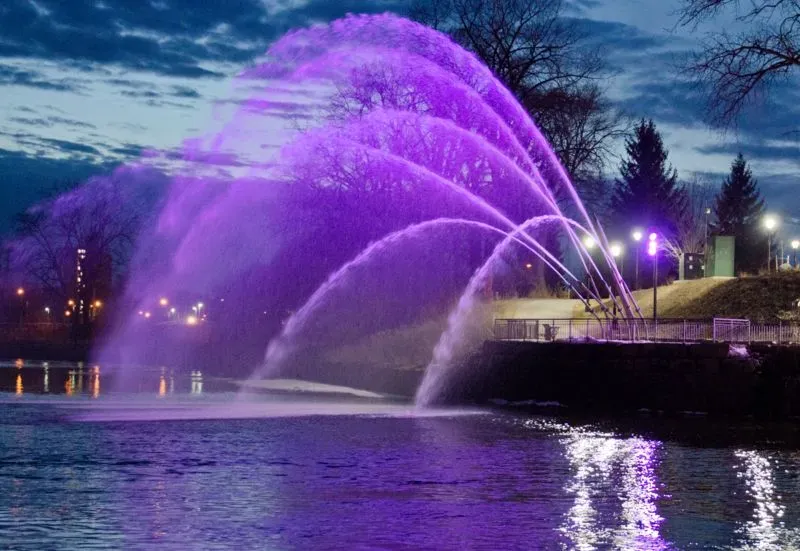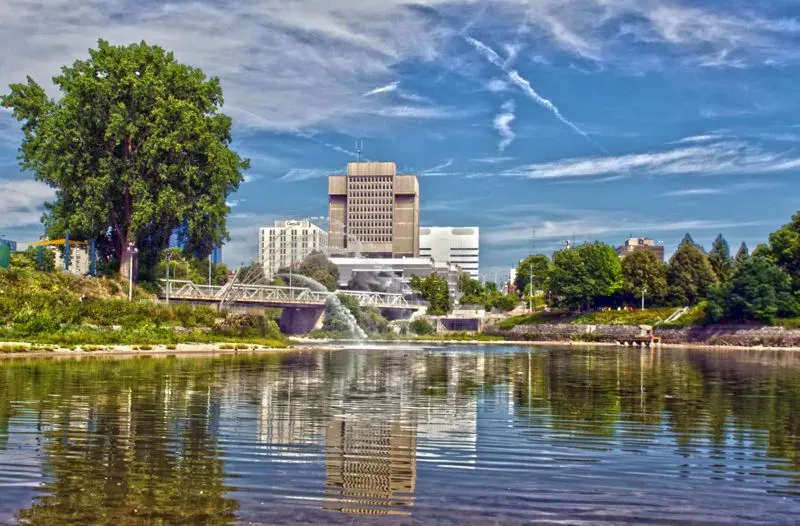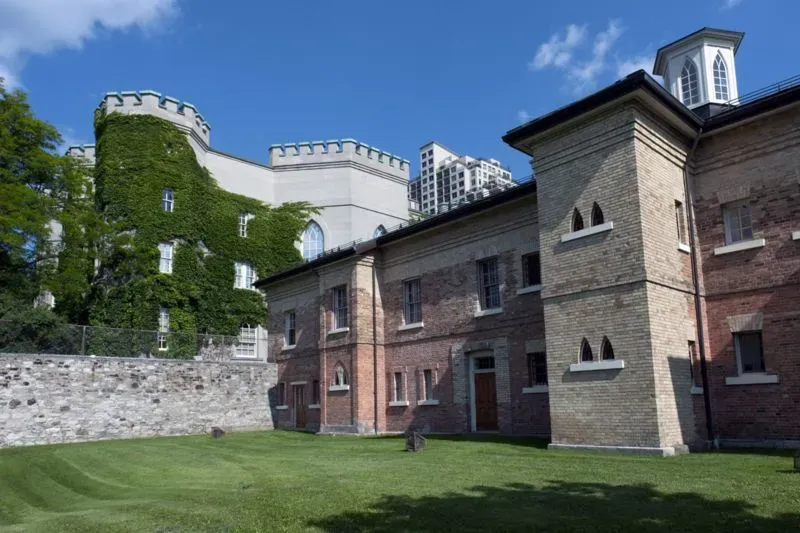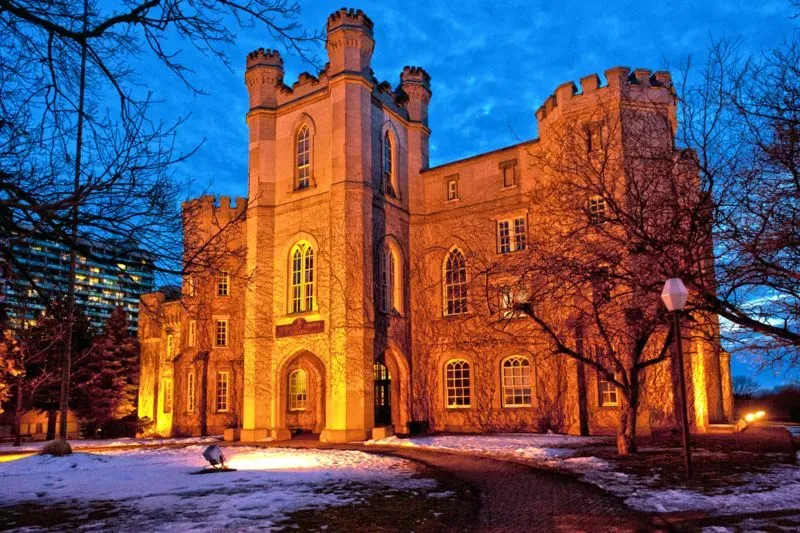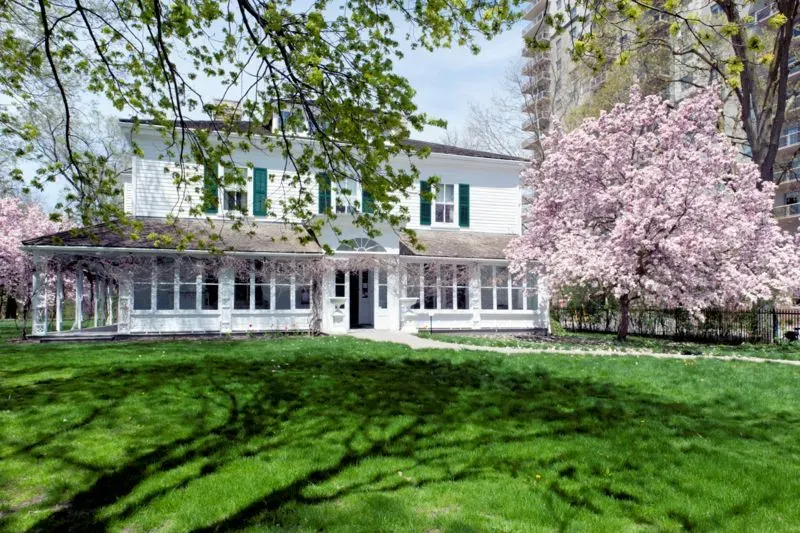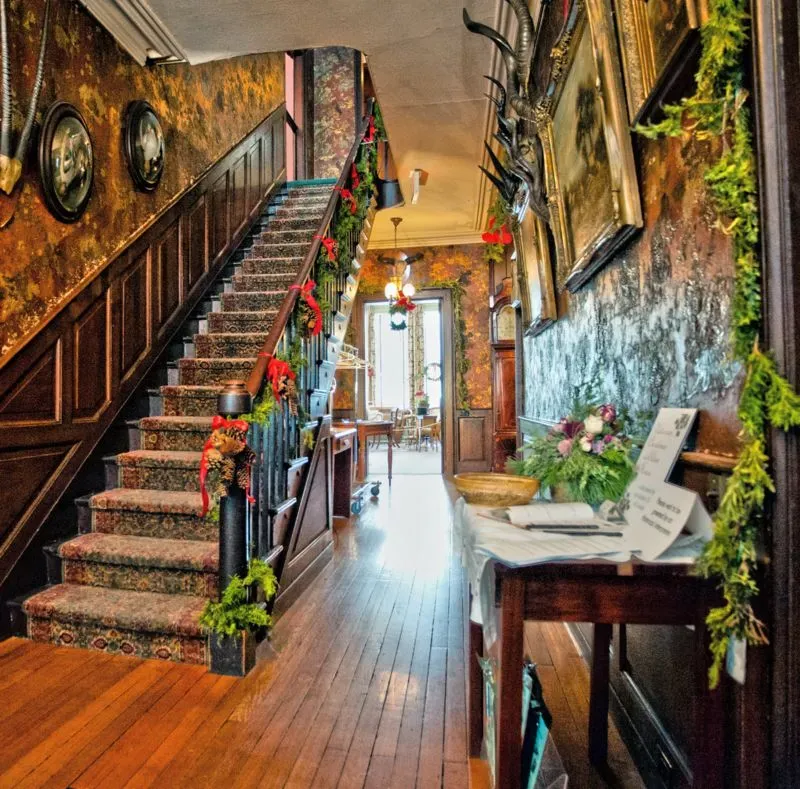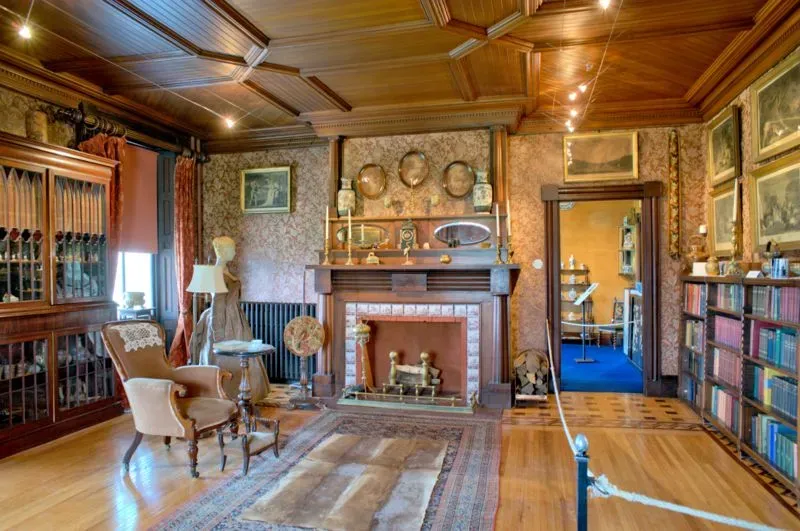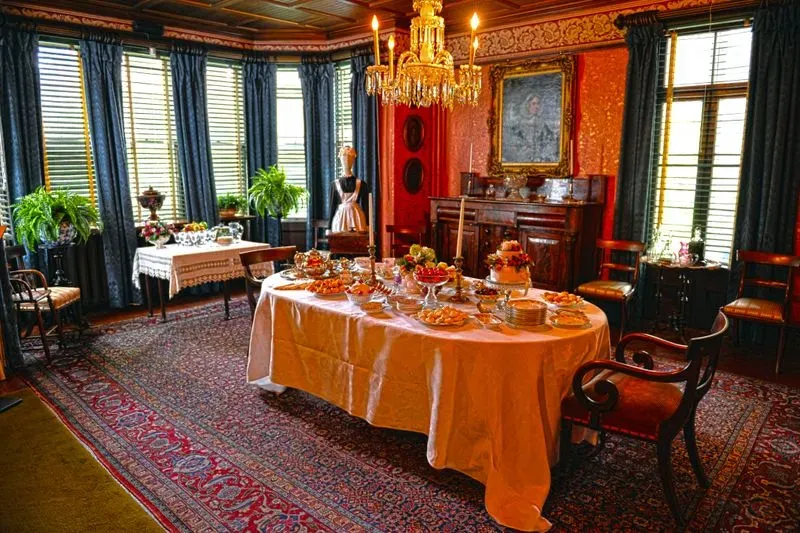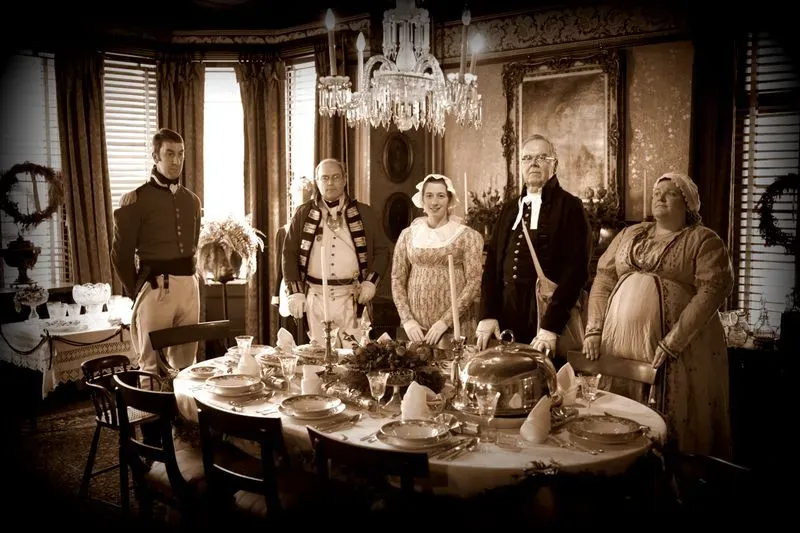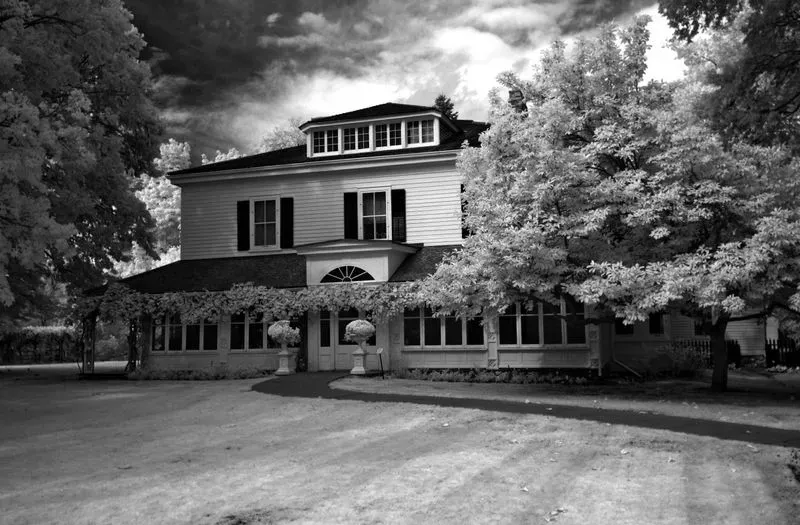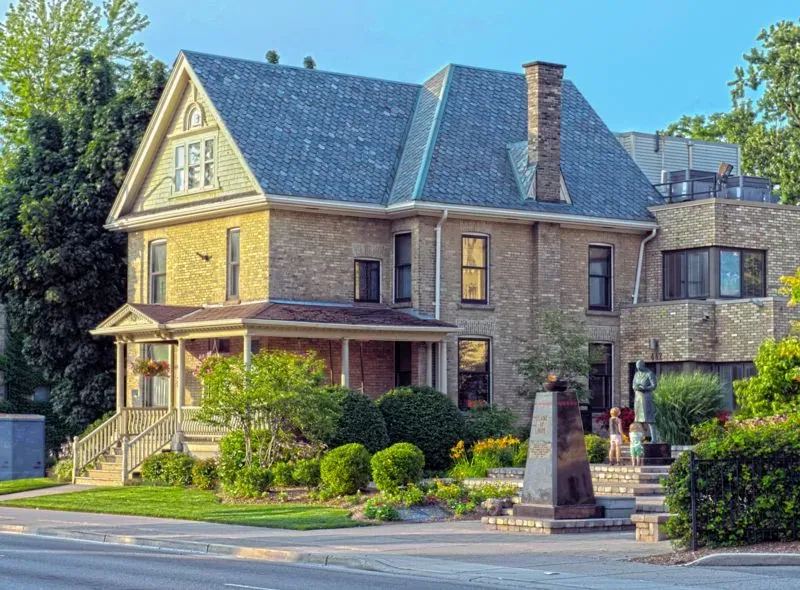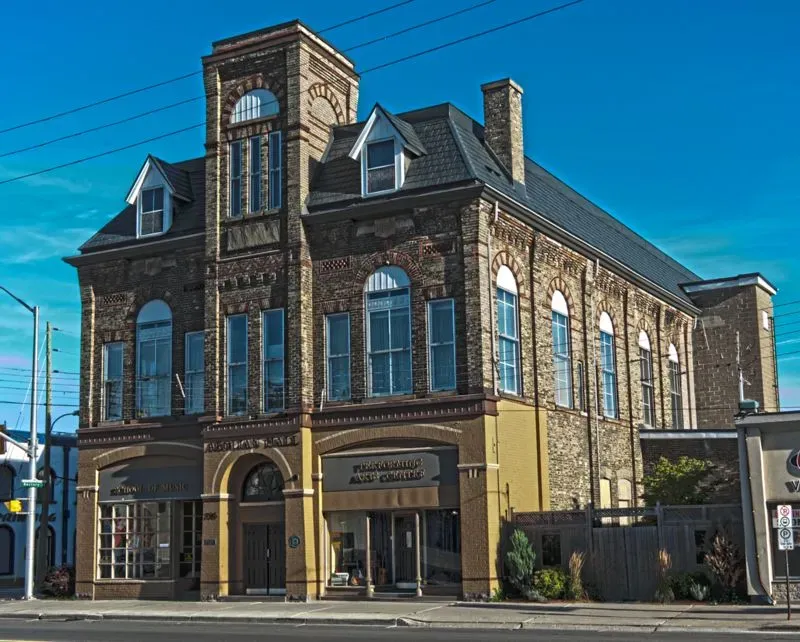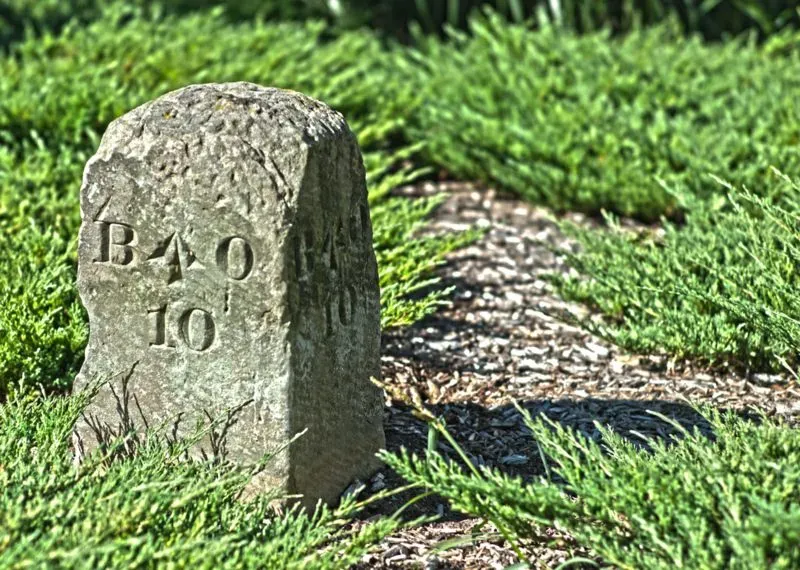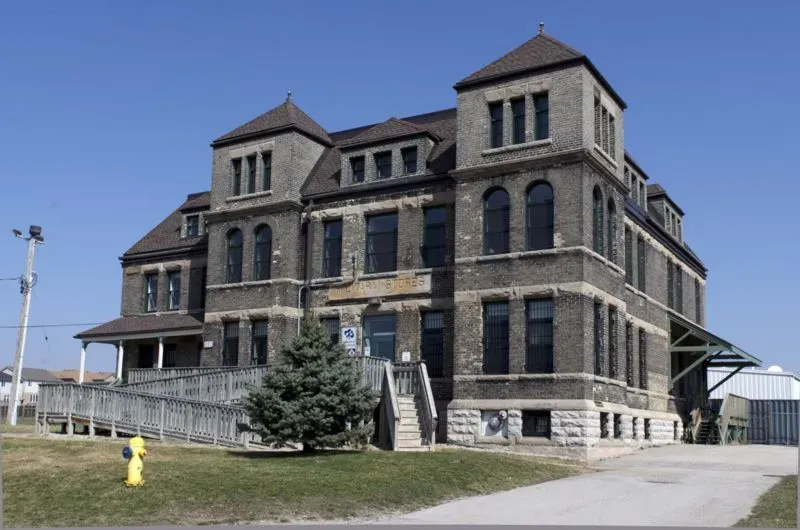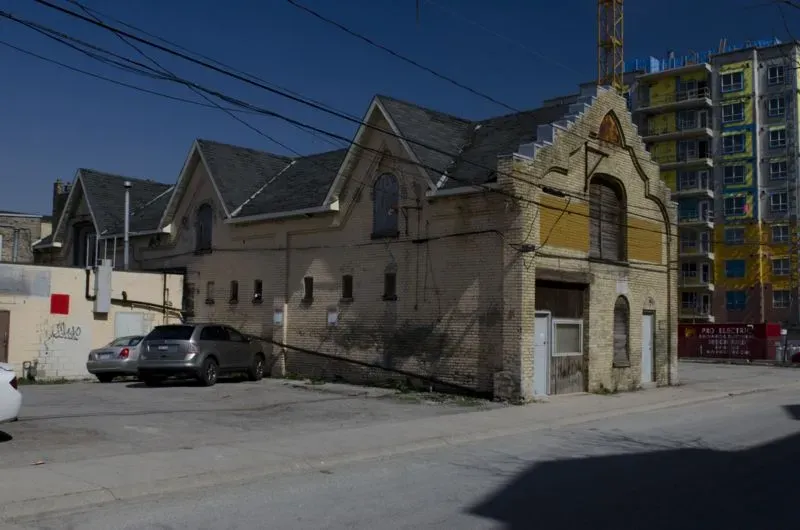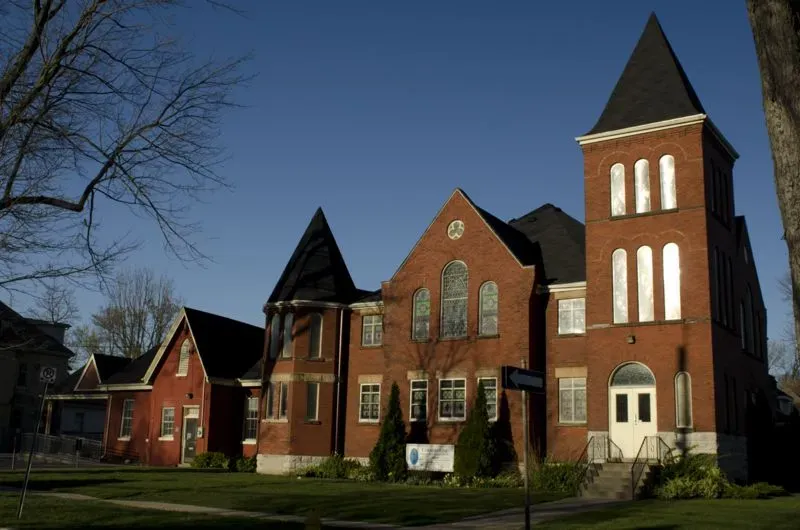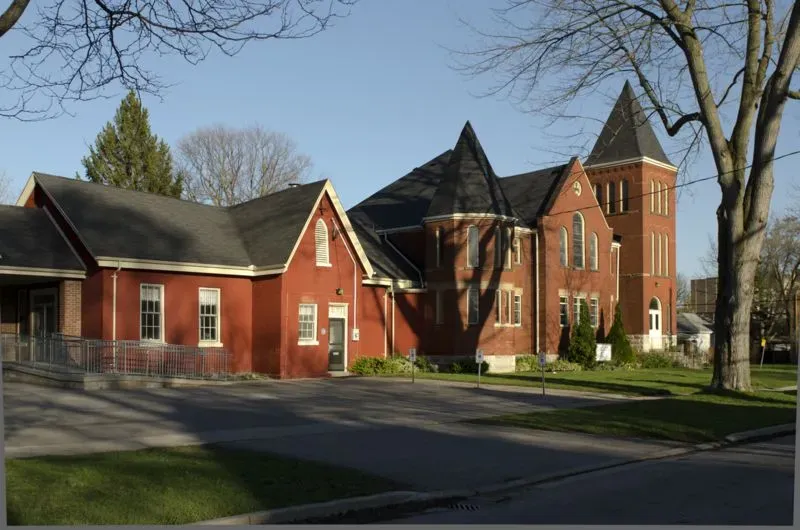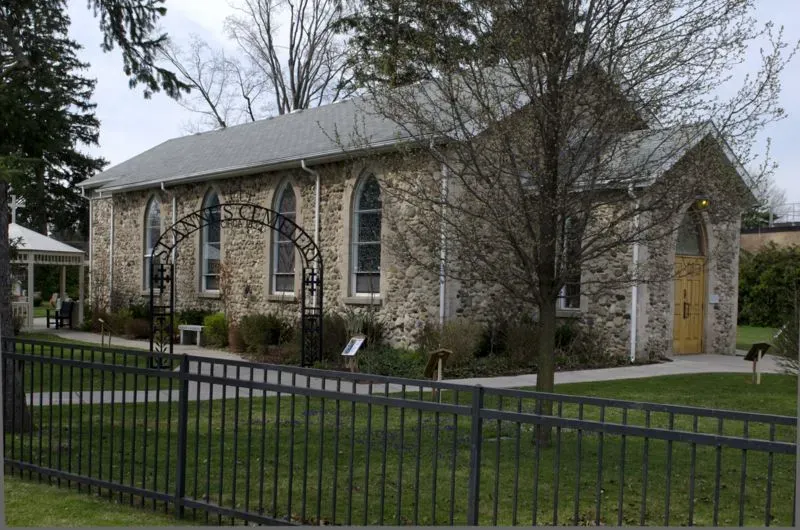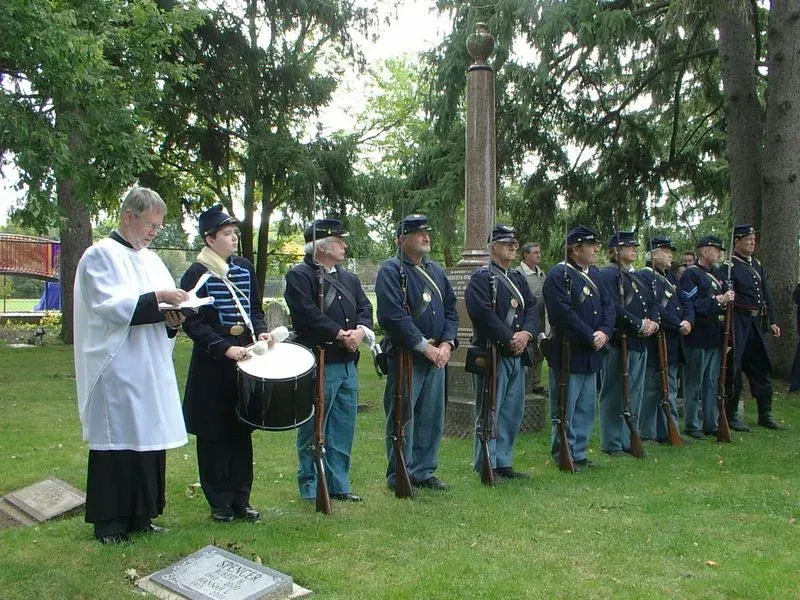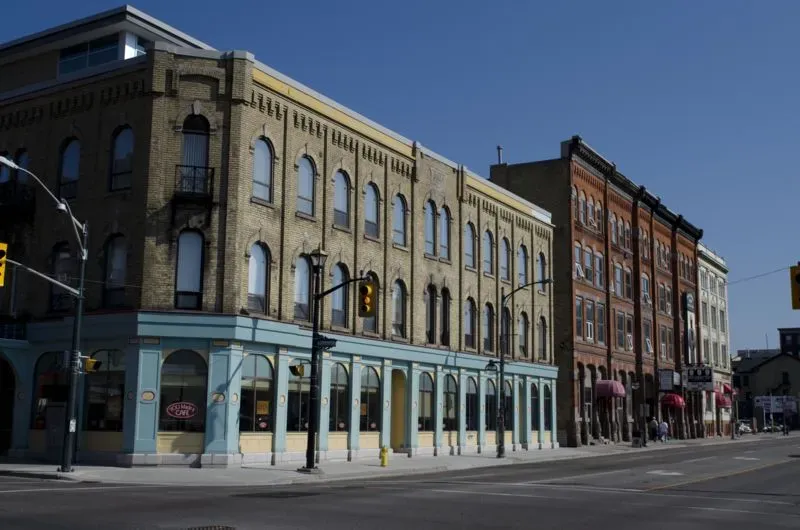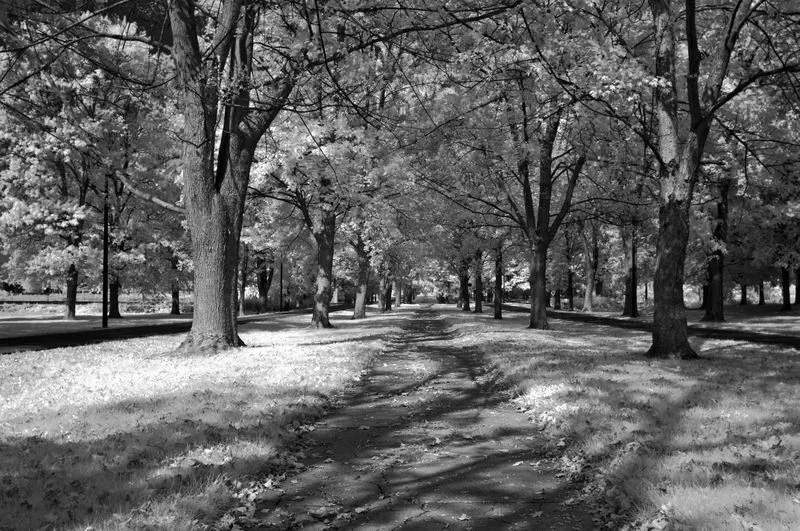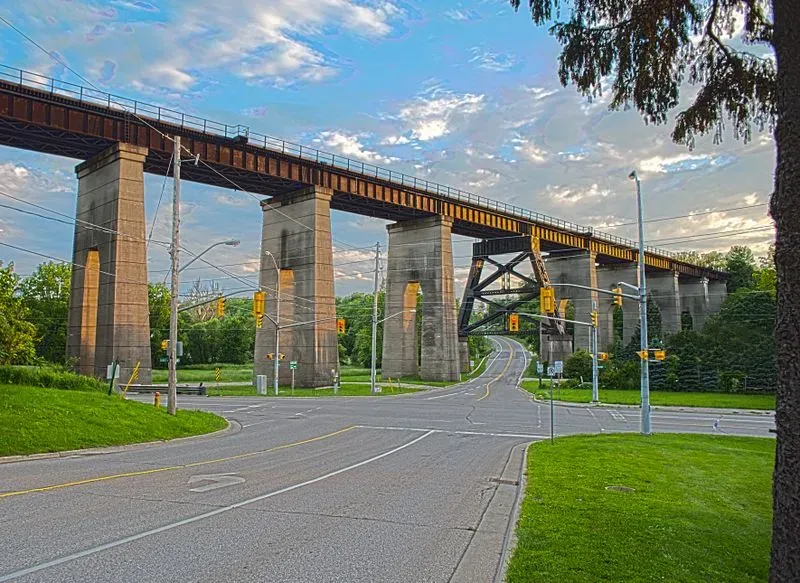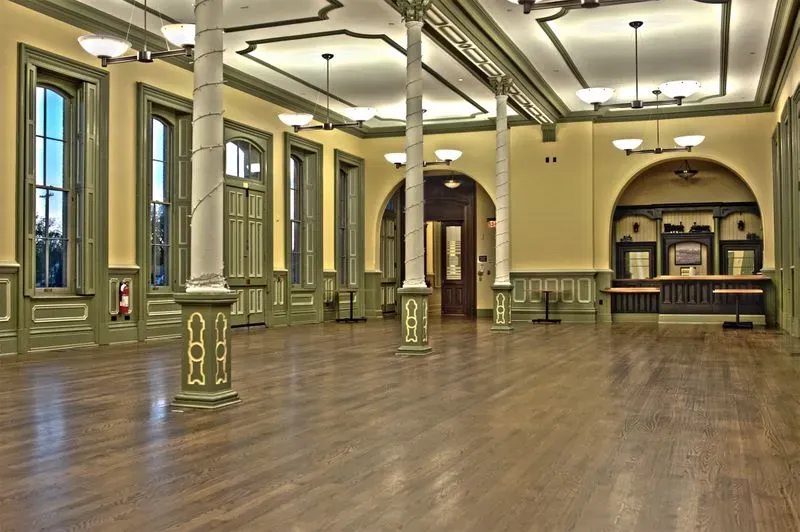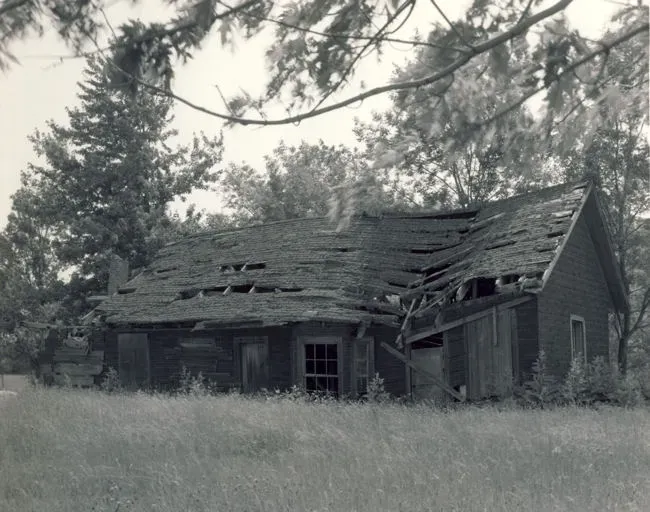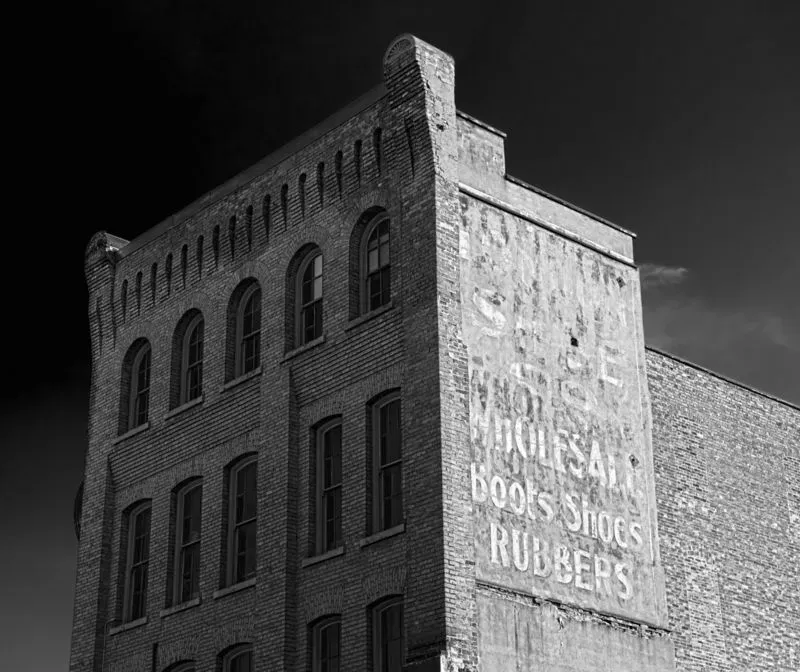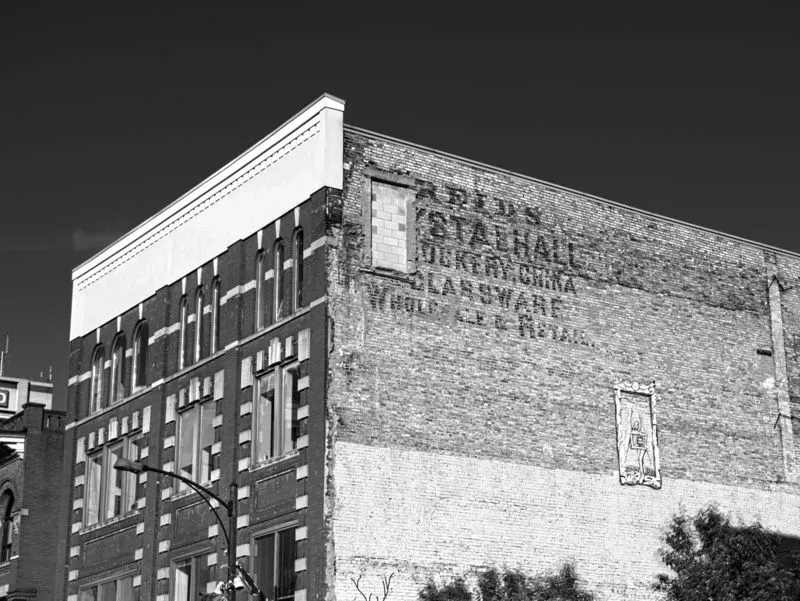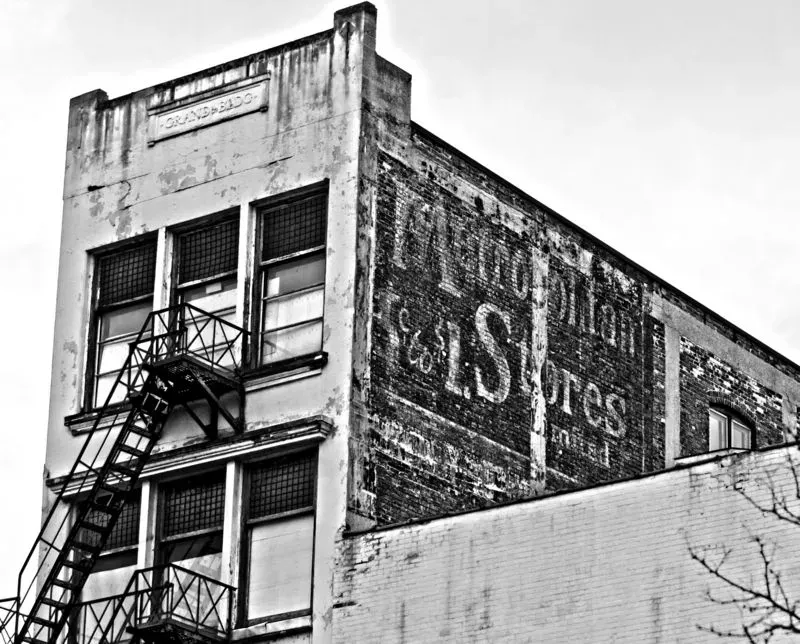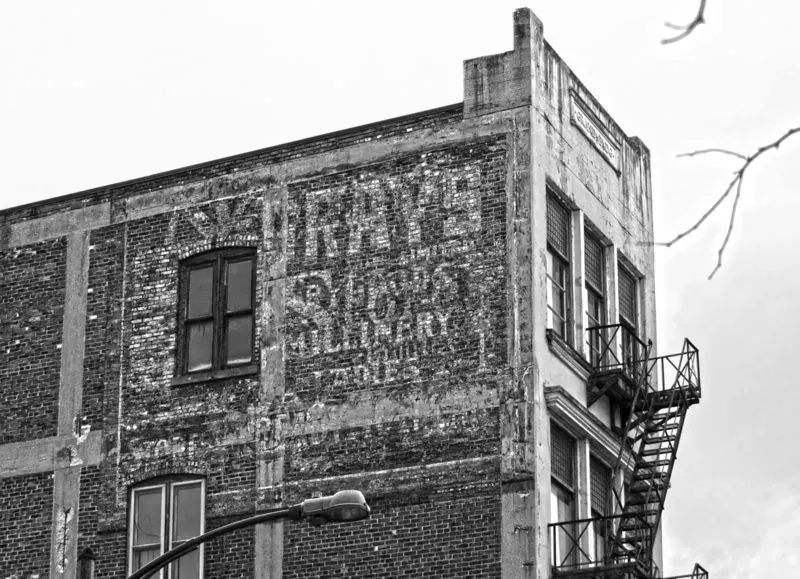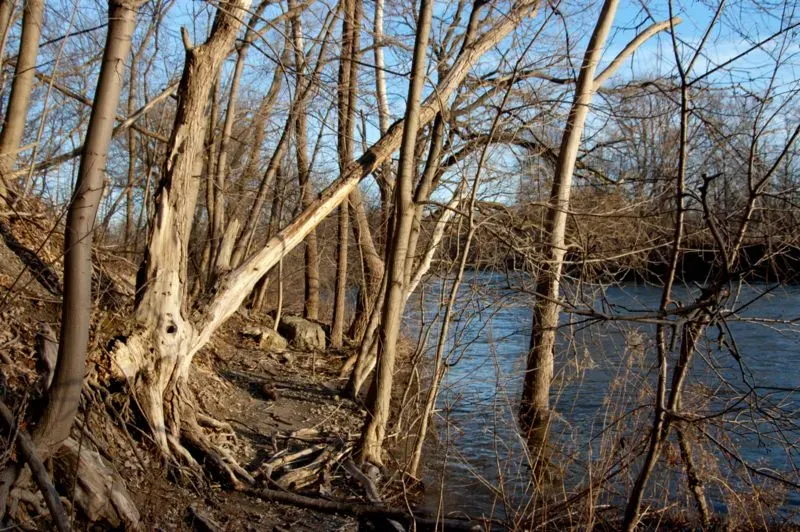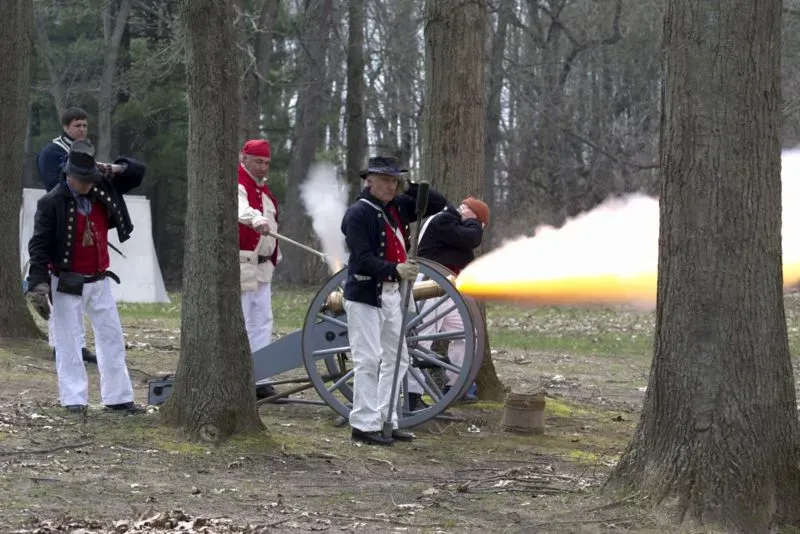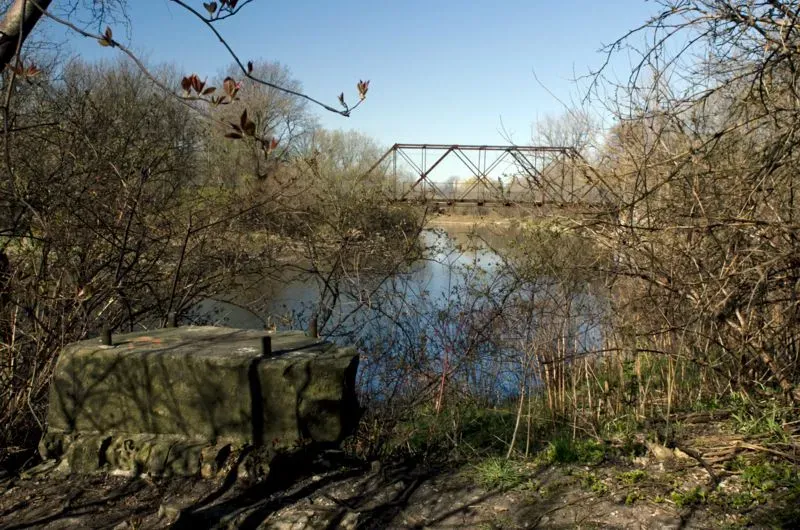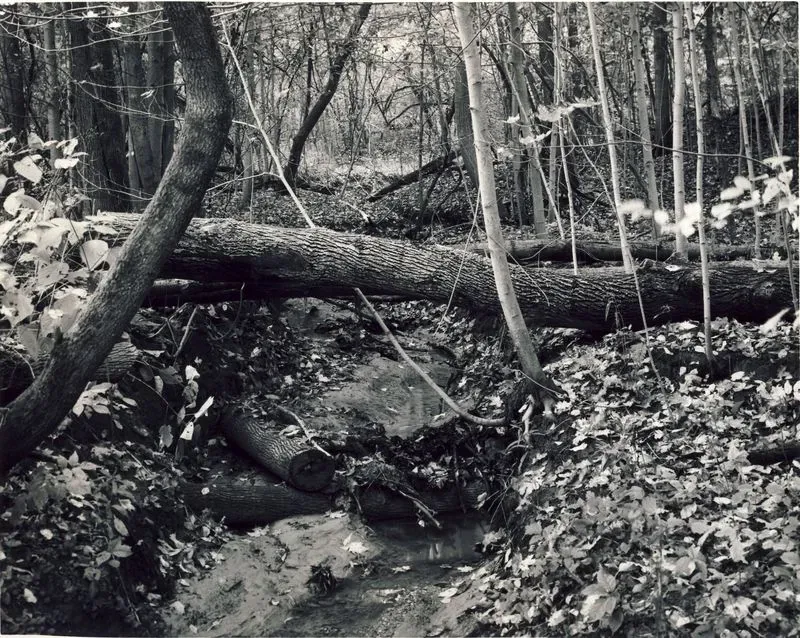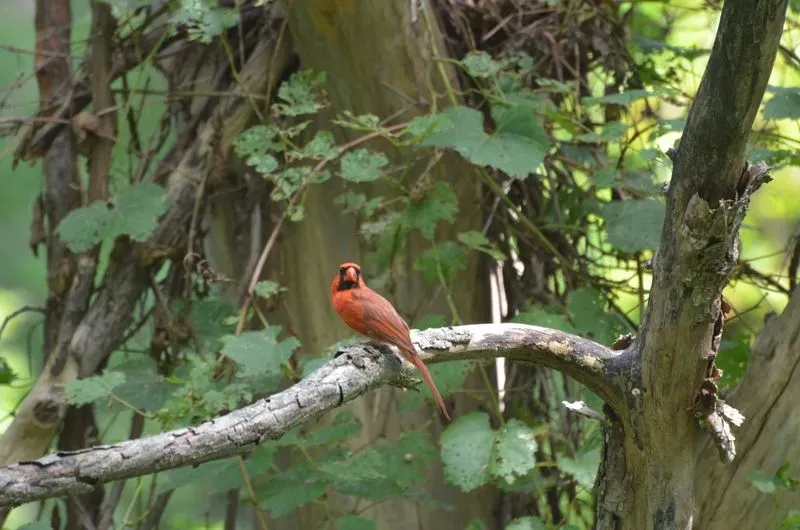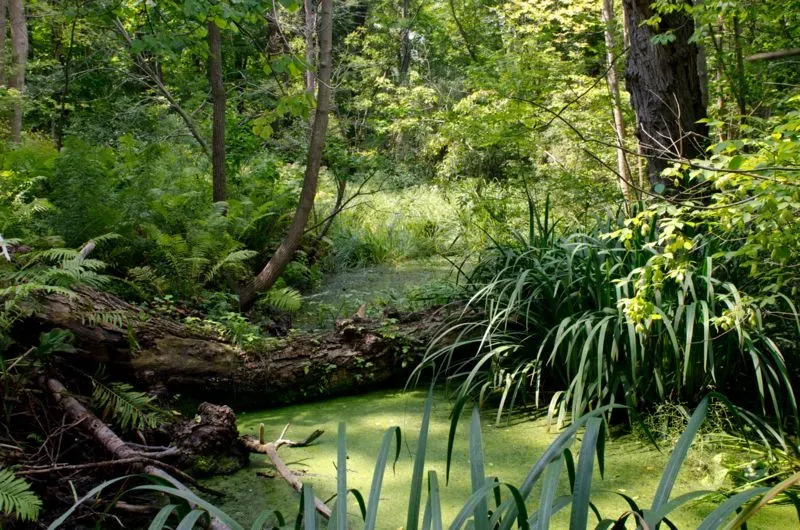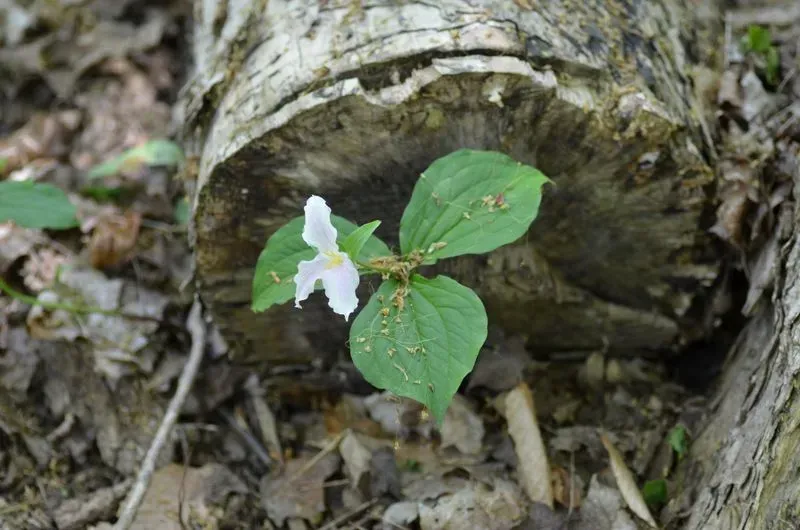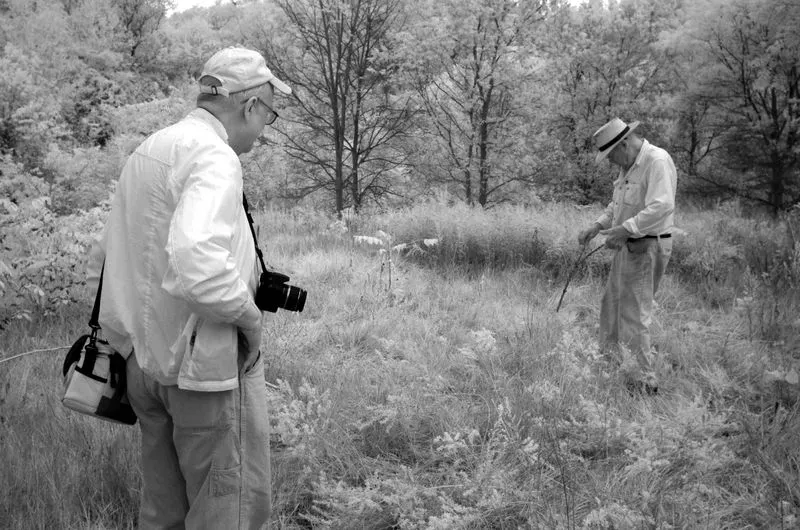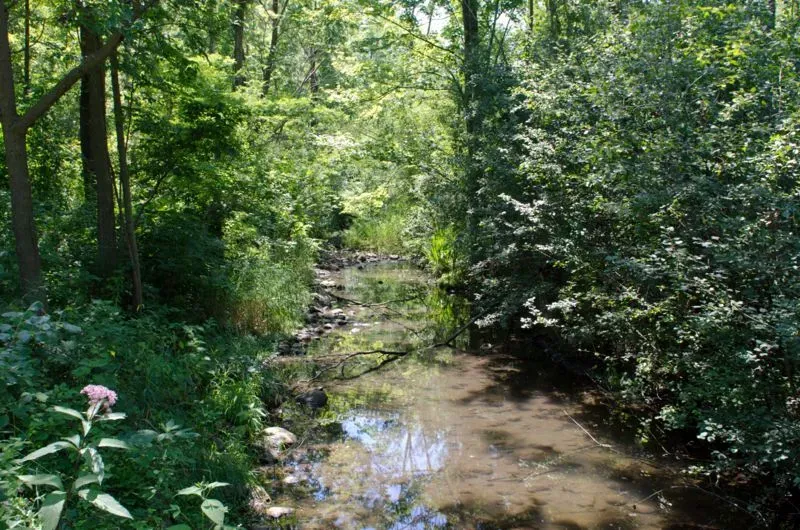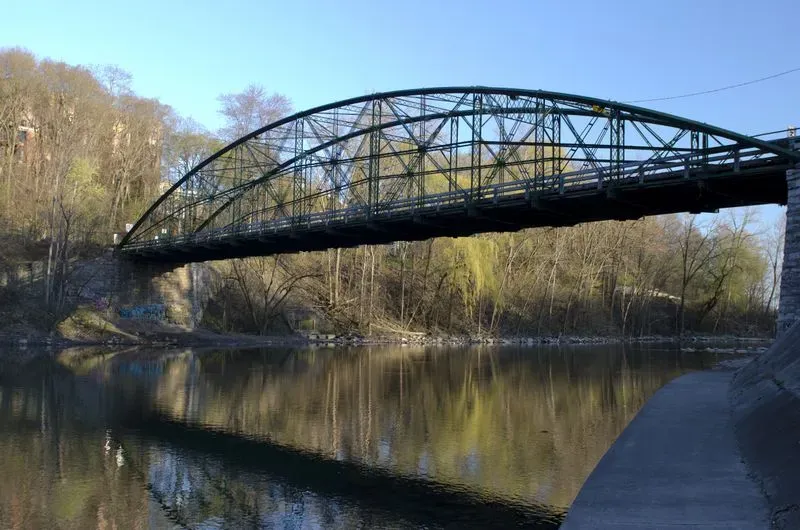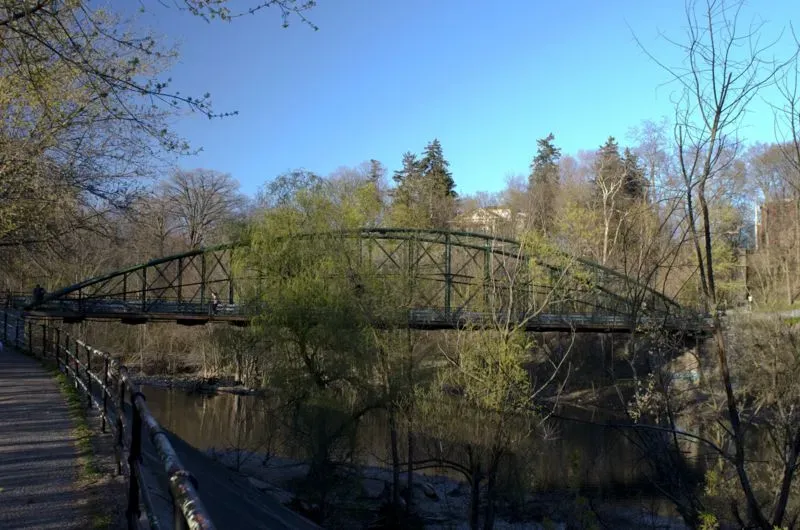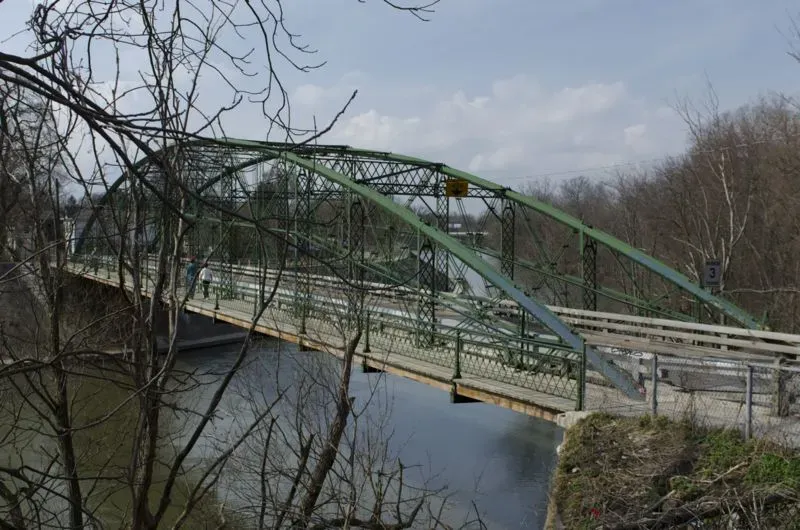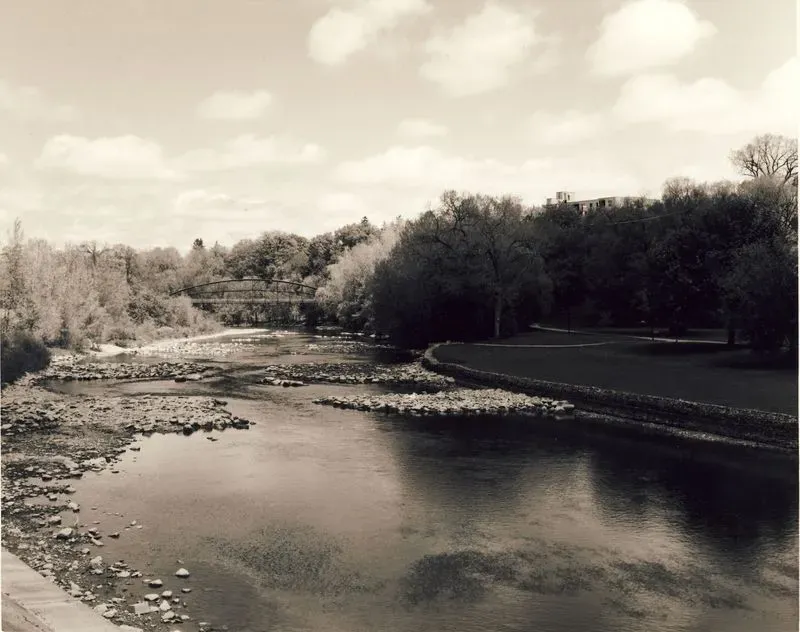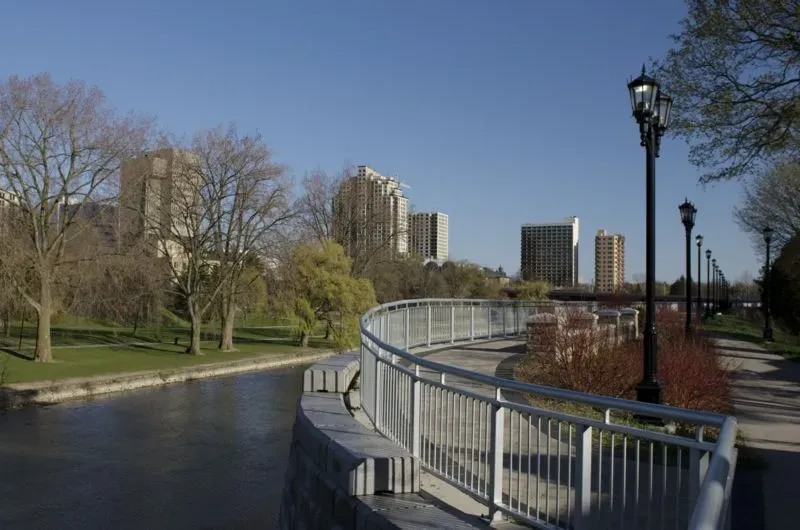Calendar Photographs
Calendar Photos 2014-present
The story of these photographs: We have been producing and providing calendars for almost 50 years. At first, they were a single sheet with a twelve month pad, the religious artwork being original drawings by Kathleen O’Neil. Later we moved into commercial calendars with our imprint. In 2010 we changed direction. Due to our interest in local history and our desire to share this with others, we began to reflect this in our calendars which we provide each year at no cost. They have become so popular that, despite a yearly increase in production, we usually run short of requests for them. Through this venue, we can share some of the photos and accompanying history with more people. All photographs - unless otherwise noted - are by Joseph G. O’Neil who combines his over 30 years of photographic work - including many award winning photos - with his deep interest in local history. The 13 - 15 photos used in our yearly calendars are chosen over several months from thousands taken. All of the photos seen here have not necessarily been used for one of our calendars - although some have been. This photograph shows a Tachihara 4x5 film view camera, actively in use today, looking over Sunset Drive from the top of the Michigan Central Railroad Kettle Creek Bridge in St. Thomas, Ontario.
City skyline
Forks of the Thames River, London, Ontario - March of 2013, just after sunset. Fountain at the Forks The Walter J. Blackburn Memorial Fountain at the Forks of the Thames in downtown London was constructed in 2008. In 2013, London hosted the World Figure Skating Championships, emblazoning itself in light shows for the occasion. This photo was taken on March 9, 2013, as the city prepared for the event. It is recorded that Lieut. Gov. Simcoe stood at this same place on March 2, 1793; 220 years and one week earlier; it’s unlikely he could imagine his “New London” looking like this.
City skyline
View of the Thames River, looking East, from downtown London during the dry and hot summer of 2012. The very low water levels made it possible to stand in the middle of the river to take this shot.
City skyline
The Old Goal Burial Ground, Forks of the Thames River, London, Ontario. Between 1830 & 1951, 19 confirmed executions by hanging took place on these grounds of the old goal behind the old courthouse on Ridout St. at Dundas St., on the banks of the Thames river. Most were public hangings, and while some were taken to family plots for burial, most were buried here in unmarked graves. The last recorded burial was that of the infamous “Peg Leg Brown”, a Texan who was executed on May 17, 1899, for the murder of London Police Constable Michael Toohey. During site construction in May of 1985, local historian Orlo Miller warned both local media and engineers on site that they would be disturbing graves if they continued digging. John Oliveira’s backhoe confirmed Miller’s concerns as it unearthed the remains of Peg Leg Brown, later identified by his missing left leg. Further graves were then found and re-interred - but not all.
City skyline
The Old Courthouse: Ridout St. at Dundas St. Although Lieut. Gov. John Graves Simcoe stood here at “The Forks of the Thames” in 1793 and declared “New London” would be the site of the capital of Upper Canada, it would fall to his personal secretary, Col. Thomas Talbot, in 1826, to choose the same site for the new district courthouse after the old courthouse (in Vittoria, Norfolk County) burned down in November 1825. Designed by architect John Ewart (who would later design Osgoode Hall in Toronto), local oral history claims Talbot influenced Ewart to model the Court House after Talbot’s ancestral Irish home, Malahide Castle, near Dublin, Ireland. This photo taken March, 2013, during the World Figure Skating Championships
City skyline
Eldon House in April (2012) "Eldon House" is a historic gem & considered one of the best "House Museums" in Canada. It sits at 481 Ridout St. N. in the centre of London. Its property, including terraced gardens down to its lower lands and the banks of the Thames river, originally consisted of 11 acres and included today's Harris Park. "Eldon House" has its origins in The War of 1812, the bi-centennial of which we are presently commemorating. Originally called “Eldon Terrace”, it was built in 1834 by British naval Capt. John Harris, and his wife Amelia Ryerse Harris. Amelia’s family had left the U.S. as United Empire Loyalists. In 1795, Amelia’s father, Col. Samuel Ryerse (other family members used the spelling Ryerson) founded the settlement of Port Ryerse, ON, on the north shore of Lake Erie, near Long Point. Here, Amelia witnessed the devastation of McArthur’s Raid in 1814, & here, in April of 1815, she met British naval surveyor John Harris who was among those surveying the Great Lakes. They married there in June of 1815. Since first built, "Eldon House" was continually & only inhabited by the Harris family. On January 1, 1960, it was donated to the City of London by John & Amelia’s great-grandchildren. Its interior is little changed from 1882 when Amelia died. Enjoy the next few following photos of what is considered London's Oldest Residence.
City skyline
Eldon House in January of 2013. The day this photograph was taken, the recorded daytime high temperature was -13C, not including wind chill factor.
City skyline
Christmas at Eldon House 481 Ridout Street N. “Eldon House” entry & staircase dressed for Christmas.
City skyline
London’s Town Crier, Bill Paul, announcing the opening of Eldon House’s 2012 Christmas and New Year’s Levees; a continuing tradition since 1834. London’s Town Crier, Bill Paul, announcing the opening of Eldon House’s 2012 Christmas and New Year’s Levees; a continuing tradition since 1834.
City skyline
Eldon House Library Beneath the library of “Eldon House” lies an earlier Thames River fieldstone foundation. About the same size as the library, it is believed to be the foundation of a log cabin that was torn down to build the house on the site. The age of the log cabin is unknown but we do know that the first recorded European settler in this area (Josiah Applegarth) built a log cabin during the War of 1812 directly across the river near the present day intersection of Charles and Edith Streets, just west of the present day Labatt Park. City areas known as Riverbend and Meadowlilly were also settled at this same time, lending question to the actual age of habitation on the grounds of “Eldon House”. (Photo taken 2013.)
City skyline
Eldon House Dining Room - High Tea Time During summer months Afternoon Tea is served on a daily basis (weather permitting) at Eldon House; especially enjoyed outside on the beautiful grounds surrounding the house.
City skyline
Re-enacting the War of 1812 & celebrating the Bi-Centennial of Eldon House in the Dining Room Taken on New years day of 2014
City skyline
Staff and historical interpreters of Eldon House in the main living room Eldon House main living room. Seen here are the staff and historical interpreters of Eldon House. Photo taken 2013
City skyline
War of 1812 re-enactors at Eldon House Photo taken in the summer of 2013.
City skyline
Ghostly View of Eldon House This photograph was used in our calendar of October of 2013 to promote the annual ghost tour of Eldon House. Over 30 sightings and stories of hauntings from the 1830s to present day have been documented at Eldon House.
City skyline
The former First Methodist Church of London as seen from the roof of London’s City Hall in 2013. The Methodist church in London began in an 1833 wooden building. Years of destructive fires and congregation growth found a need for a larger, brick structure which began construction in 1895 at the corner of Dufferin and Wellington streets. June of 1925 saw Methodist & Presbyterian churches combined into “The United Church of Canada” with the Methodist church in London renamed “Metropolitan United Church.” This beautiful, 1,400 seat landmark continues to be one of London’s largest and most vibrant churches.
City skyline
Metropolitan United Church, as seen from the ground, with the Victoria Park Cenotaph in the foreground.
City skyline
Banting House - Adelaide St. at Queens Ave, London. This national historic site honours the co-discoverer of Insulin, Sir Frederick Banting, who also had a brief private family medical practice in London. Well known for his work with diabetes, Banting is less known for the accomplished artist he became. A personal friend of A.Y. Jackson and other members of Canada’s “Group of Seven” painters, he often accompanied Jackson on painting excursions to Georgian Bay & made many painting trips to remote areas of Quebec & the Arctic. Many of his works can be seen today in museums and libraries.
City skyline
Beth Emmanual Church - Grey St. London While the congregation was founded in the 1830s, this building (their second church) officially dates to the 1870s. Older members of the congregation believe it goes back to the late 1850s. The original Beth Emmanual Church, built in 1848 and now known at the Fugitive Slave Chapel, was moved from its original site on Thames St. by the river to a lot beside this church in 2014 where it is being restored. The two buildings together comprise one of the most historic and significant landmarks anywhere in Canada relating to the Underground Railroad and the flight to freedom in Canada for former black slaves from the US.
City skyline
Grosvenor Lodge, London Built by Samuel Peters in 1853, the Lodge was the Peters' family home for three generations, until granddaughter Leila's death in 1974. In 1992 a coalition of heritage and environmental groups, under the sponsorship of Heritage London Foundation, entered into an agreement with the City, to operate Grosvenor Lodge as a public center.
City skyline
Aeolian Hall - Dundas & Rectory St, London. Built circa 1884 as the Town Hall for the then-separate town of "London East". A year later, London and "London East" amalgamated into one larger city and the Hall lost its Town Hall title. Since then, the Hall had many uses over the years including a fire hall, library, court house and several business. Today it is one of the finest venues anywhere in southwestern Ontario for live music performances.
City skyline
Old Victoria Hospital - South St. between Colborne & Waterloo St. The first recorded use of the lands between Colborne and Waterloo Streets at the Thames River was during the summer of 1872. A smallpox outbreak saw the hasty building of what was little more than a low wooden shack, 60 ft. long, at a cost of $568.67. Heated by a wood stove, water for the “hospital” was hand pumped from a dug well beside the “dead house”( where smallpox victims were kept until burial). Rebuilt in 1875 with a major addition in 1941, this site was formally closed & relocated to Commissioners and Wellington Roads by 2013. Presently owned by the city of London, the old hospital buildings were demolished in 2014-15 and the lands await redevelopment. The original Children’s Hospital building (far left side of photo, c. 1870s) and the Original Children’s War Memorial Hospital building (c. 1923) were saved from demolition.
City skyline
Springbank Park Pump House To supply water for a growing city, a dam was first erected across the Thames river to form a reservoir/lake, followed by the building of the pump house which, in 1881, began pumping water from this river reservoir up to our present day Reservoir Hill. Gravity fed water was then supplied to London homes & businesses from this highest point in the area. Springbank Park grew up around the area while the original reservoir/lake became - and remains - a popular water sport destination.
City skyline
Ordnance Survey Stone - Kenneth Ave. at Waterloo St. Lands for London’s original Military Garrison Grounds were surveyed in 1839. By today’s boundaries, these lands would encompass the area bordered by Kenneth Ave., Waterloo St., Dufferin Ave. & Clarence & Richmond sts., including today’s Victoria and Piccadilly parks. The stone pictured (c. 11" square & 22" high) was placed here circa 1839 & is the last (known) remaining ordnance survey stone of that original survey. Piccadilly Park was the site of Lake Horn, a small lake formed by damming up Carling Creek, itself named for Thomas Carling who, in 1843, opened a brewery in the vicinity of the present Yale & Harvard sts. After the abandonment of the dam, Lake Horn returned to a natural swamp, locally known as “Frogmore”. Although "officially" dating to 1839, some local residents claim the stone dates to the earlier 1826 survey of London.
City skyline
At the turn of the twentieth century, Fire Chief John A. Roe requested a new station to serve the north end of the city. In 1909, No. 4 Fire Station was built on the corner of Colborne and St. James streets, and No. 5 was built on Adelaide Street. Architect Arthur E. Nutter designed both stations in an abstract Italianate style, featuring a simplified Tuscan tower, broad eaves, and pilasters above the fire hall door. These stations complement the residential streetscape. In 1912, London purchased its first motorized fire truck. By 1925, the fire department was completely motorized with three pump engines, three chemical and hose trucks, two ladder trucks, one aerial ladder truck, and two chiefs’ cars. In 1999, there were eleven fire stations in London equipped with ten engines, nine special units, six tankers, three aerial ladders, and two chiefs’ cars. Since this photograph was taken, the London Fire Department, in their own effort to preserve and maintain heritage, has had the dome on top of the tower repaired and restored back to its original condition.
City skyline
The historic "Military Stores" building behind Wolseley Barracks & near the Carling Heights Community Centre. The Military Stores building, is, in fact, two blocks/buildings - “T” and “A” - and was “probably” built around 1889. A significant though not attractive building (even the city’s official Heritage Designation [No.236] describes it as an "important although austere presence"), it is not of any particular architectural style, mixing several. It was, however, constructed of high quality materials and with considerable craftsmanship, which no doubt accounts for its prolonged and effective life. It received the city’s Historic designation because it is one of the earliest buildings that created London’s “distinctive character”. This photo shows the front entrance of the larger of the two "Blocks - the T Block building - with its “tuscan towers” on either side of the top floor. The buildings were constructed as part of the program to create the London Infantry School: the Dominion Government had formed the Infantry School Corps in 1883 to train local militia, and especially militia officers. (The reader is invited to look further into the history of the Royal Canadian Regiment for more details on these formative years. Also, London’s famous Wolseley Barracks was the main and ongoing part of this building effort.) T Block served mainly as a depot, and housed a variety of military personnel until after WWII. The “PMQ” (Permanent Married Quarters) was a residence for married officers, and later, in the early 20th Century, occupied by ordnance officers. (Ordnance personnel are those who procure, maintain, and issue weapons, ammunition, and combat vehicles). After WW2, the personnel again varied until the entire building became the HQ of the Central Region Cadets. It later passed into the hands of the City of London and is now used to house a variety of nonprofit organizations.
City skyline
Old Livery Stable - circa 1870, Marshall St. off Adeliade St., London. One of the very few known remaining commercial livery stables of it's age, this building is unseen by most today, and used as storage for local businesses.
City skyline
The old Waterloo South Primary School, 186 Waterloo St., London, is attached to the back of Cornerstone United Reformed Church, NE corner of Waterloo and Grey Streets. The old "Ward School" built circa 1864 may be London’s earliest surviving school. Now in the SOHO neighbourhood. In 1864 this area was known as "St. David's Ward".
City skyline
Another view of the old Waterloo South Primary School. Photograph taken in the spring of 2012.
City skyline
Richmond Row, London, 2012, showing the former London Mutual Fire Insurance Co. now a designated Heritage building. The twin towers of St. Peter's Basilica can be seen in the far, top left.
City skyline
The "Bishop's Palace" known also as "Blackfriars", 90 Central Ave, London. This Italianate home was built in 1870 by Thomas Kent whose father was granted much of the land along the river by the Crown of England in the 1840s. Despite selling off most of the original land grant, this parcel was retained by the family and Thomas built the home after selling some of the remaining land along the river to the City of London. When Thomas died without an heir the house was purchased for Bishop Fallon, Roman Catholic Bishop of London, by John Donnelly. The property became the residence of 6 further Roman Catholic Bishops until 2008 when it was sold to Blackfriar Estate Condominiums which has made an obvious effort to retain many of the historical features of the building, while updating it for contemporary living.
City skyline
St. Annes Church Byron: St. Anne's is a lovely stone church built in 1853, and is home to an active, diversified, Anglican (Episcopal) congregation. They celebrated their 150th anniversary in 2003 & are located on Commissioners Rd. in the Byron area of London and is one of London’s oldest surviving churches. The churchyard cemetery dates to the 1830s and is the burial place of many pioneers, including Ira Kilbourne, a Canadian who fought in the American Civil War and served as part of the personal bodyguard of Ulysses S. Grant.
City skyline
Tristan O'Neil, Civil War re-enactor Drummer. St. Anne's Cemetery, London, Ontario - Taken at the rededication of Canadian Civil War Veteran Ira Kilbourne. Graves of veterans of the American Civil War can be found in almost every cemetery in London, Ontario, including both American & Canadian veterans, Union & Confederate, who fought in that war.
City skyline
Rededication burial salute for US Civil War veteran Ira Kilbourne, St. Anne's Cemetery, London.
City skyline
Rededication prayer services for US Civil War veteran Ira Kilbourne, St. Anne's Cemetery, London.
City skyline
St. Peter's Seminary at 1040 Waterloo St, London, was founded by the Right Reverend Michael F. Fallon, OMI, Roman Catholic Bishop of London at the time. The original Seminary was established on September 15, 1912 with students housed and classes held in the Bishop's Residence next door to St. Peter's Cathedral Basilica on Dufferin Ave. This new St. Peter's Seminary building was opened on September 29, 1926, and is constructed of Credit Valley stone, designed in the Collegiate Gothic style. After the students moved into this new Seminary, the Dufferin Avenue Bishop's Residence was used as the Rectory of St. Peter's Cathedral Basilica until 2004 when, despite public protest, this beautiful & historic building was demolished.
City skyline
Victoria Park, Christmas 2012, as seen from the roof of London's city hall. The park was originally the site of the British garrison, as well as the cricket grounds. The garrison was expanded with new buildings during and after the Upper Canada Rebellion in 1837. The British troops withdrew to Europe in 1853 to train for the Crimean War, with their barracks then used to house escaped slaves from the United States, as one of the end stations of the Underground Railway. The troops returned in 1861, fearing that the American Civil War might spread to Canada. In 1874 the park was transferred to the city and renamed Victoria Park, after Queen Victoria.
City skyline
Northwest corner of York street and Richmond.
City skyline
The Historically designated tree covered walkway to the old London Asylum Grounds. Photo taken during the fall of 2013, looking north from Dundas Street.
City skyline
This steam tractor was made in London by George White & Sons Company, founded in London in the mid 1800's by George White upon his arrival from England. George White's company also produced nuts and bolts at what was claimed to be the first bolt and nut factory in Canada.
City skyline
The Michigan Central Railroad Kettle Creek Bridge, St. Thomas, Ontario, built circa 1929. This is actually the 4th bridge in this location and was built both over and under the 3rd bridge while trains still ran every day and night. A major feat of engineering, this bridge was saved from destruction by the St. Thomas OnTrack organization who hope to create Canada's first "High Park", similar to other High Parks in Paris, France and New York City, NY. This photo was taken near the summer solstice of 2013.
City skyline
The "CASO" - Canada Southern Railway Station - main dining room, St. Thomas, Ontario. St. Thomas is almost exactly half way between Detroit, Michigan and Buffalo, NY. Hosting, at one time, 6 different railways, St. Thomas was then known as "The Railroad Capital of Canada". Built circa 1871, this huge and ornate dining room was considered a tourist destination in its own right for people making long cross country trips by railroad, right up until the Depression of the 1930s. Saved from near destruction, today this beautiful, historic landmark serves many purposes, including hosting banquets and other public events.
City skyline
The Canadian submarine "Ojibwa", saved from destruction by the group "Project Ojibwa" - Port Burwell, Ontario - photo taken 2013. One of southern Ontario's most amazing tourist destinations.
City skyline
Thomas Edison once worked here in this little railroad station where he was a telegraph operator. The building was in the village of Granton, Ontario, just N of London. It is not generally known that the Edison family, including the older siblings of Thomas Edison, all come from an area just north of Port Burwell, Ontario, (now home to the Project Ojibway submarine and museum). Although Thomas was born in Ohio (his father fled Canada during the Upper Canada Rebellion of 1838), Thomas would come back to Canada to both work and visit relatives, including his older siblings. (The Edison family cemetery is in the hamlet of Vienna, Ontario). As a young man, Thomas Edison worked at various small railroad stations in Ontario, including this one. This photo was taken about one year before the old train station finally collapsed. It had been purchased and moved to the owner's farm and sat near the main road at the edge of the village of Granton awaiting restoration that, sadly, never happened.
City skyline
"Ghost Signs" of London: The Architectural Conservancy of Ontario (ACO) defines a “Ghost Sign” as: “The faded signs that can be seen on commercial buildings in old parts of a city. The signs were painted on or carved into the walls many years ago by the businesses that occupied the buildings, and are a valuable link to the past.” Since photographed in 2012 & 2013, only two of the four shown here still existed in 2014.
City skyline
Ghost Signs" of London - summer of 2013. This sign no longer can be seen.
City skyline
"Ghost Signs" of London. Summer of 2013. Can still be seen from Carling Avenue.
City skyline
"Ghost Signs" of London. from 2013, this sign has now been covered by siding.
City skyline
Massey Harris "ghost sign". This can no longer be seen from this point of view. This photo was taken in the 1990s from the roof of the old parking garage of the Farmer's Market, downtown London, at King and Talbot Streets. Part of the sign can barely be seen from street level on Talbot.
City skyline
"Ghost signs" - Dundas Street, downtown London. Not only does the wear of time and acid rain fade these old signs, graffiti remains a major threat to the few remaining.
City skyline
Westminster Ponds ESA. (a designated Environmentally Significant Area)
City skyline
Westminster Ponds ESA.
City skyline
South Branch of the Thames River, at the foot of the old Victoria Hospital. Taken just before sunset in early spring, just after the snow had melted. This whole area is slated for major redevelopment, and someday soon, sights such as this will be long gone.
City skyline
Remembrance Day Parade with a Sherman Tank. Taken in front of the old London Armouries , a building that is now preserved and used as one of downtown London's finest hotels.
City skyline
The Battle of Longwoods took place 4 March 1814, near Wardsville, Ontario, in present-day Southwest Middlesex County, Ontario Each year, on the first weekend in May, the Upper Thames Military Re-enactment Society presents a re-enaction of The Battle of Longwoods, at the Longwoods Road Conservation Area. Four of our ancestors, (including a 4X great-grandfather, Private John Molyneaux of the British 6th Regiment of Foot and later the Glengary Light Infantry Fencibles) fought at the siege of Fort Erie in the fall of 1814). One of them, Robert Molyneaux, was amount the first of the British soldiers killed here - he was killed in action on September 17th of 1814 while attacking an American cannon, ("the retaking of the cannons") similar to the cannon shown in this photo.
City skyline
Battle of Longwoods re-enactment.
City skyline
Monarch Butterfly on Swamp Milkweed, MeadowLilly Woods Environmentally Significant Area. Photo by Siobhan O'Neil. Sadly, Monarchs are becoming an endangered species, and are often difficult to spot.
City skyline
The Meadowlily Bridge was constructed in 1910 and is considered by many to be a heritage structure, being one of the first iron bridges in the London area. It was fully restored and re-opened by the City of London in 2014 and designated as a Heritage Site. The bridge was built by Issac Crouse - the same man who built Blackfriars bridge in London. The heritage remains of the Meadowlily Mills were built in 1856; a path along the river will lead one to see the brick stone foundation remains of London's early history. Among Meadowlily's history is an almost lost tale of "The Lost BlockHouse of Meadowlilly Woods". One version of this story has British Soldiers, returning from Pontiac's Rebellion (circa 1763) wintered over in this area. Starving through the long, hard winter, they discovered a local cache of seed corn belonging to the local First Nations. (some say the Mohawk Nation). Fearing starvation themselves if all their seed corn was eaten, the Mohwak attacked and wiped out the British. Other stories differ, and some scant, old evidence shows several building were once in this area; major archeological sites in this area do show human habitation took place here for a very long time, and that the original "Indian Trail" - as it was called by early settlers - was nearby, a trail that could date back as early as 500 AD / 500 CE .
City skyline
Canada Anemone. Rue and Wood Anemones can be found in Meadowlilly Woods.
City skyline
Tree roots in Meadowlilly Woods ESA, south branch of the Thames River.
City skyline
Stream in Meadowlilly Woods ESA. Taken in the Autumn of the 1990s.
City skyline
Cardinal in Meadowlilly Woods, ESA. This area is fast becoming famous as a prime birding location.
City skyline
Often referred to as Meadowlilly Woods “Zen Garden”, this beautiful little frog pond is a favourite spot for photographers and is not far off the main trail. Taken mid-spring of 2011.
City skyline
Meadowlilly Woods “Zen Garden” - version two. The same location, but taken late August during a heat wave.
City skyline
Meadowlilly Woods, ESA. Dead trees are allowed to grow and fall naturally, providing natural wildlife habitats and nutrients to the soil with their slow decay.
City skyline
Virginia Bluebell, Meadowlilly Woods, ESA. Although very common in the USA, Meadowlilly Woods is the most northern edge of where Virginia Bluebell can easily be found. Some samples have been found as far north as Owen Sound, Ontario, but it is very rare to see it north of London. Although it is not uncommon on the south branch of the Thames River, be careful when looking for it, as it prefers the same soil conditions as Cow Parsnip and giant Japanese Hogweed. The sap of the later two plants is photo-toxic, and can cause very nasty burns on the skin.
City skyline
Wild Rose, Meadowlilly Woods ESA.
City skyline
Ontario's official flower - the Trillium, Meadowlilly Woods ESA.
City skyline
Grave Witching in Meadowlilly Woods ESA, photo taken October 30, 2013. A similar "grave witching" search was performed two years earlier in south London on a pioneer homestead cemetery to locate graves.
City skyline
"Beecher's Island" was a piece of land on current day Gibbons Park, on the north branch of the Thames River. circa 1850 the "island" was separated from the "mainland" by a small stream. The last remnant of this stream can be seen today, and still provides a haven for frogs and, if one is lucky enough to see one, occasionally a turtle. Henry Beecher was famous for many firsts in London, including the first “recognized” game of Cricket in the 1840s.
City skyline
Goldenrod, north branch, Thames River. Although many people only associate allergies with Goldenrod, honey made from this plant is very tasty and helpful in building up a tolerance to local plant allergies.
City skyline
Happily making a comeback - Beavers in London. I have been asked not to give the exact location of the beavers in order to protect them, since they were almost obliterated by early fur traders. I have seen them, amazingly, fell a tree a foot wide (12 cm) and 30 feet high (10 meters).
City skyline
Rabbit lunching near the Thames River, London.
City skyline
Tree Lichen - Thames Talbot Land Trust, just west of Meadowlilly Woods ESA.
City skyline
Tree Lichen - South branch, Thames River, near the old Victoria Hospital Site.
City skyline
Blackfriars Bridge, London.
City skyline
Blackfriars Bridge, early spring, 2012. Blackfriars is the largest "Bowstring" wrought iron bridge still known to be both in existence and in active use. The bowstring design was only popular for a 5 - 6 year period when this bridge was built in 1875. Four previous bridges existed at this site beforehand.
City skyline
Blackfriars Bridge, early spring, 2012.
City skyline
Blackfriars Bridge, Thames river, looking north from Dundas Street. This photograph was taken in the 1990s.
City skyline
Thames River, north branch, looking south towards downtown and Harris Park. This view would be just south of Blackfriars Bridge.
City skyline
Sifton Bog, west end of Oxford Street, London, Ontario. Left over from the last ice age, this bog is one of the few surviving spots in southern Ontario where rare wildflowers can be seen.
City skyline
PUC Power Sub-station, just east off Recory Street, south of the CN train tracks. Built in 1921 in what was then a heavily industrial area, they still put a sense of beauty and esthetics in public buildings. The more modern bricks replaced previous windows. Back then, even an electrical substation was built to make use of natural sunlight when possible.
City skyline
Old Labatt Beer Truck in front of the renamed "Budweiser Gardens"(after Budweiser purchased Labatts). For many years this fine arena was called The John Labatt Centre, but it would seem that Canadian heritage and pride take second place to American commercial interests. The original John Labatt brewery of London did not "officially" start until about 1855, at a site close to this building, however the original brewery that John Labatt bought into was started there in 1827, making Labatts one of the oldest breweries in Canada.
City skyline
John Pedersen - Blacksmith. In operation for many years, this business remains one of the last vestiges of the local manufacturing and workshops that used to populate Old East.
City skyline
"The Cursed Graves", St. Thomas Churchyard, St. Thomas, Ontario. The legend: In the 1820's, a rich man near Port Stanley, Upper Canada, (now Ontario) commandeered a young lad to join a rowboat crew to “save” a ship stranded in a storm in lake Erie. In actual fact, all crew members had already been saved, so this was nothing more than a salvage operation for profit. The boy’s mother, having certain “gifts” could foresee the boy’s death if he went to sea. The rich man ignored the mother’s pleas and took the boy, who did indeed fall overboard and drown. Later, confronting the man with her dead son in her arms, the woman gave the man "The Curse of the Irish”, stating that seven deaths in seven years would befall his family. Many of his family did indeed die by accidents and violence in the following years, as can be seen on the gravestone dates. One family member, however, escaped to Utah and later to California where he discovered a silver mine, and returned many years later to St. Thomas. Hiring a stone mason from Toronto, he had this stone made from imported Italian marble for his family's grave site. It is said the stone mason, after he was paid, refused in turn to pay his suppliers and disappeared with the money. A few years ago, during reconstruction and restoration of this stone, it was discovered that no actual burials exist under this stone at all. The actual burial site of this family is suspected but unproven. And......this is not the famous/infamous “witch’s grave” which this burial ground is popularly known for.
City skyline
One London Place, currently London's tallest building, as seen from the roof of London city hall, taken not long before sunset, 2013.
City skyline
CTV London News Reporter Bryan Bricknell at the "Occupy London" campsite on their last night in Victoria Park, London, November of 2011. It was an unseasonably warm night, with media almost outnumbering the "Occupy" protesters, so I started to photograph members of the media in action. This particular photograph won a thousand dollar grand prize from CTV News.

